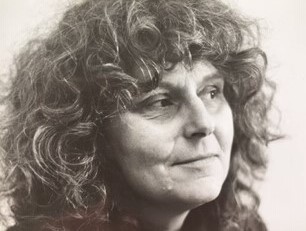Writing is a job, and has to be treated as a job, but it’s also a craft and you have to master certain basic techniques. The first craft I learned was stone carving, and the first thing I had to learn was how to handle the stone and how to use the tools.
But to be a good sculptor or a good writer you also need talent, which is something you can’t learn and is very difficult to explain. When I was carving, it was knowing exactly where to hit a block of stone – the intervention of the eye. The only way I can describe it is that you become sensitive to your materials. And it’s the same with writing. I don’t want to know precisely how I do it, all I know is I can do it and that’s enough for me.
The interview continued …
I like the way the English language works and I like precision, which is why I like working with poets and I enjoy reading poetry. I think poets are more precise in the way they use language than prose writers, and they’re much more aware of the technicalities of language construction.
One of the lesser known facts of the English language is that there are practically no true synonyms, so one of the exercises I quite often do when I’m working in a school is list-making. We take a noun, such as ‘light’, and collect all the verbs associated with it: glisten, glitter, gleam, glow, sparkle, etc. We then discuss precisely what each one means. For example: a glow isn’t reflected light, it’s source light; a glimmer is source light but very weak; a glisten is light reflected off a film of water on a hard surface. You can be this precise!
When I’m setting a writing exercise for a class, or a group of students, I always try not to put people in a situation where they’re likely to fail. That’s not as easy as it sounds. The basic problem is that people tend to base what they write on what they read, and that’s mostly novels. So if you say to a group, ‘Write a story,’ they will probably spend the whole of an English lesson setting the scene and never get around to the story itself, because that’s how most novels begin, with 3,000 or 4,000 words of scene-setting.
So I try to find ways around that; ways to cut out the time wasting and get straight into the story at the point where it’s most interesting. For example, I have a collection of about 150 picture postcards, and the students each pick a card and pretend it’s an illustration from a book. They then write the page which would go with that illustration. What they are doing, in fact, is writing a page from somebody else’s book and, because they haven’t written the beginning, they incorporate all the scene setting into the narrative, which is what an experienced writer should do. Although, for most people, it will never be more than just an interesting fragment, it will at least be a good fragment.
When I’ve written for children or young people, I’ve written what I’ve wanted to write; nobody’s ever put pressure on me to write about certain things or to write in a particular way. But there certainly is a prevalent idea – shared, I think, by a lot of publishers – that anything half-way literate is ‘elitist’. Their argument is that a reader, and particularly a young reader, is going to feel condescended to, excluded, if you show too much technical or verbal accomplishment.
I think that’s nonsense. This whole idea – that young children who can’t read very well need books that aren’t written very well or that because they can’t draw very well they need pictures by someone who can’t draw very well either – is insulting. In my opinion, that’s the real elitism: writing down to an audience. Children, to start with, can’t tell the difference between literate and illiterate writing, so why give them the illiterate?

photo (C) Sabine Druce, 1992
